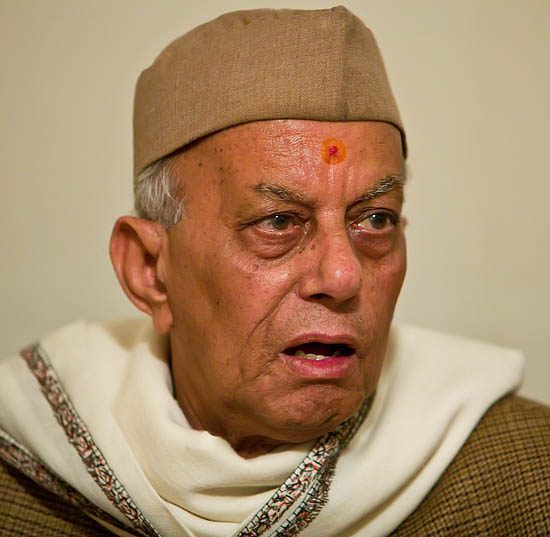by Rajan P. Parrikar
First published on SAWF on July 10, 2000

Rajan P. Parrikar
Photo: Sanjeev Trivedi
Namashkar.
The old melodies assembled under the Bilawal rubric come on the heels of the Todis and the Bhairavs in the matutinal parade of ragas. The Bilawals bring to mind those marvellous, hot breakfasts in India, whipped up by the ladies: soft idlis idling in an ocean of sambar and spreads of crisp sub-micron thick dosai laced with gourmet chutneys. Did I also mention filter coffee? (bonus points awarded to the gals if the beans are slow-roasted and freshly ground for that deep, full-bodied flavour).
Raganga Bilawal
The influence of the Bilawal raganga extends far beyond its immediate environs, its kernel pressed into service in diverse melodic settings. Raganga Bilawal, therefore, merits a careful study. Our trek begins with an introduction to the fundamentals of the raganga. Later in the discussion, we call on several important members of the enchanting Bilawal family.
Let M = shuddha madhyam and m = teevra madhyam.
In my ruminations on ragas, I use the term “swara” instead of “note.” They are not equivalent, and there is no good English equivalent of “swara.” Those who fail to make this distinction apropos of the chemistry of raga devalue the very idea of raga.
The Bilawal that is composed of the seven shuddha swaras and corresponds to the Carnatic melakarta Shankarabharanam. The features of raganga Bilawal are best embodied in its flagship raga: Bilawal, often referred to as Alhaiyya Bilawal. The lakshanas are heuristically fleshed out below.
G M R G P, [P] M G R S
This tonal phrase suggests the alpatva nature of madhyam in arohi prayogas. The latter half embeds a vital gesture. The P in square brackets signifies a ‘shake’ imparted to it. Parenthetically we may note that this is also a seminal phrase in Bihag, a raga of Bilawal extraction. The intonation – uccharana – so critical to Bilawal is difficult to convey with the written word but will be clarified in the audio clips.
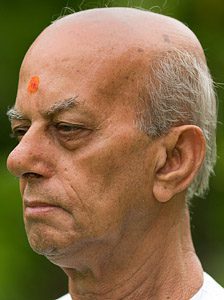
Ramashreya Jha “Ramrang” (© Rajan P. Parrikar)
G M (G)R G P, G P DG M G, G R G P D-M G
The kan (grace) of R imparted to rishab and the coupling of D and G merit attention. The arc D-M is a Bilawal signpost, the precise intonation of which is later addressed by Pandit Ramashreya Jha “Ramrang.” It bears emphasizing that although dhaivat is the vadi, it is not a nyasa swara. A careless elongation of D will most certainly ruin Bilawal.
P, P P (N)D N S”
This tonal strip is the preferred launch for uttaranga forays and a recurring theme in all Bilawals.
S” (N)D P M G
S”, D n D P M G
The first of these tonal sentences invokes a key avarohi locus, terminating with nyasa on gandhar. The second phrase has the komal nishad tucked in, in classic Bilawal fashion.
Obiter dicta: Some people regard Bilawal and Alhaiyya Bilawal as two different ragas, positing that the latter contains an additional komal nishad. I see no reason to make that distinction and consider them to be one and the same raga. The lakshanas of Bilawal have an existence independent of komal nishad whose inclusion (or exclusion) does not alter the Bilawal DNA in any essential way. We shall continue to use “Bilawal” and “Alhaiyya Bilawal” interchangeably.
The core of raganga Bilawal is masterfully abstracted and summarized by the vidwan and vaggeyakara, Pandit Ramashreya Jha “Ramrang.”
Primed with the foregoing preliminaries we now confront a dazzling array of Bilawal performances. The kernel of the raganga is extended in a variety of ways in the prakars surveyed here. It takes a certain experience sifting the central ideas from the sidelights. The specialized constructions render mastery of the Bilawal group a challenge, exacting considerable training and thought. These ragas have to do time in one’s mind. Not surprisingly the Bilawal prakars are to be found only in the repertoire of the seasoned campaigners.
Raga Bilawal or Alhaiyya Bilawal
Full-length compositions in the ‘light’ genres with complete fidelity to Bilawal are uncommon. We inaugurate the proceedings with Madan Mohan‘s composition from BAWARCHI (1972), rendered by Manna Dey, Lakshmi Shankar and Nirmala Devi: bhor aayi gaya andhiyara.
A natyageeta from the Marathi musical KATYAR KALJAT GHUSALI composed by Jitendra Abhisheki and delivered by Bhargavram Achrekar. There is a strong presence of Shukla Bilawal here, but the composition is an exemplar of Bilawal lakshanas: dina gele bhajanavina.
Our classical tableau features an impressive array. Let’s dig in right away.
The utterances of Ramashreya Jha “Ramrang” and K.G. Ginde must be singled out for special attention from the shastraic point of view.
We begin with Salamat Ali Khan who introduces us to the canonical vilambit khayal: daiyya kahan gaye loga Braja ke basaiyya.
Ramashreya Jha “Ramrang” deals the popular chestnut: kavana batariya.
Nivruttibuwa Sarnaik was a musician of considerable power and depth, his gayaki cast in the Atrauli-Jaipur mould and fortified with taleem under Rajab Ali Khan of Dewas.
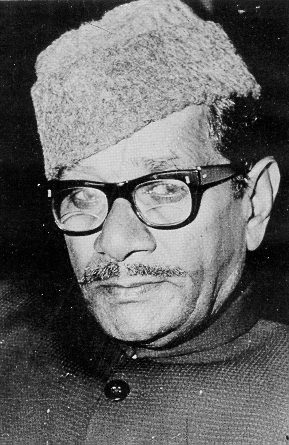
Nissar Hussain Khan
My own introduction to the delights of Alhaiyya came through the Rampur-Sahaswan vocal master Nissar Hussain Khan. This cheez has been a member of our household for as long as I can remember: sumirana kara mana Rama-nama ko.
Basavraj Rajguru, the eclectic master with a penchant for the vacanas of Basavanna: neerige naidile shringara.
Rajguru‘s second offering is classical proper: bina dekhe mohe chaina nahin aave.
The same cheez from his distinguished Dharwad neighbour Mallikarjun Mansur. This is a Mansur wet behind his ears, from his pre-Jaipur, Nilkanthbuwa days.
Ratnakant Ramnathkar of Goa, a pupil of the Agra luminary Vilayat Hussain Khan “Pranpiya,” was an ace harmonium player in his teens. He later sought vocal training from Pranpiya and amassed a not inconsiderable amount of material. He was a skilled composer and adopted “Premrang” as his colophon. Jitendra Abhisheki sings a lovely Ramnathkar composition (the tabalchis’s tihai crashes elsewhere before Jitendra-bab nonchalently supplies the adjustment): roke thado gail mori woh to Nandalala.
A robust and full-throated Gangubai Hangal.
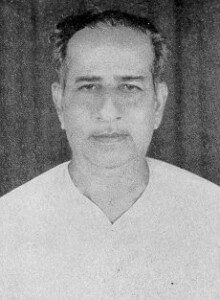
Ratnakant Ramnathkar
By now the uttaranga-pradhana nature of Alhaiyya Bilawal ought to be evident.
Moving along, Kumar Gandharva‘s delectable composition: laita ja jyo.
The Gwalior people relish Alhaiyya Bilawal. Krishnarao Shankar Pandit belts out a tarana in this unpublished performance given in his final years. Incidently, this same tarana recently released in Ulhas Kashalkar’s voice lacks the thrust and verve so characteristic of KRSP’s style.
A masterly Atrauli-Jaipur statement by Mogubai Kurdikar.
The foremost exponent of Atrauli-Jaipur today, Kishori Amonkar: aali ri kituve gaye. (Note: this composition is the standard Atrauli-Jaipur issue in Raga Yamani Bilawal.)
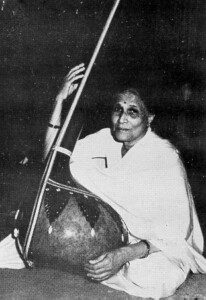
Mogubai Kurdikar
An old Marathi bandish by Malini Rajurkar: Shiva hara he bhava hara.
Vilayat Hussain Khan “Pranpiya” chips in on behalf of the Agra clan.
On the instrumental front, we have Ravi Shankar. A solid, if not memorable, assay.
Now that we have cultivated an acquaintance of the basic Bilawal, we visit its many prakars, some of which are specialty items of specific gharanas. Those widely acknowledged as ‘traditional’ and embraced broadly are: Devgiri, Yamani, Kukubh, Shukla and Sarparda. Each of these traditional prakars are deserving of a fuller exegesis but here we shall only touch upon the central themes. The motivated reader will have enough material in the clips for further exploration. A sound understanding of the Bilawal kernel is necessary to appreciate the variations imposed on it.
Raga Devgiri Bilawal
The Kalyan and Bilawal ragangas are natural allies, and supply genetic material to both Devgiri and Yamani Bilawal. In the eponymous Devgiri (after the town close to Daulatabad and home to the celebrated 13th C. shastrakara Sarangdeva) elements of Kalyan – Shuddha Kalyan in particular – are grafted on the Bilawal chassis. The raga’s active span ranges from mandra pancham to madhya saptak pancham where most of the melodic activity is undertaken. While ‘local variations’ prevail across schools, the common Devgiri germ is apprehended in the following tonal ribbons:
S, (S)D’ N’ D’ S, R G
G R S, D’ P’ G
Notice the D’-S chalan in the first phrase and the influence of Shuddha Kalyan in the second, through the P’-G prayoga.
N’SRGMGRG, N’ R G M G, G R G [P] M G
The advent of madhyam attenuates the influence of Shuddha Kalyan and re-installs Bilawal. There are special gamakas brought to bear on the uccharana (refer to Ginde’s clip) in the poorvanga of both Devgiri and Yamani, without which they would be rendered dull and flat. Occasionally, elements of Bihag are introduced, to wit: S M G P or G M P N.
K.G. Ginde presents a canonical Devgiri via the traditional Gwalior khayal, E bana byahana, and follows it up with S.N. Ratanjankar’s druta bandish, mano zara aba manani.
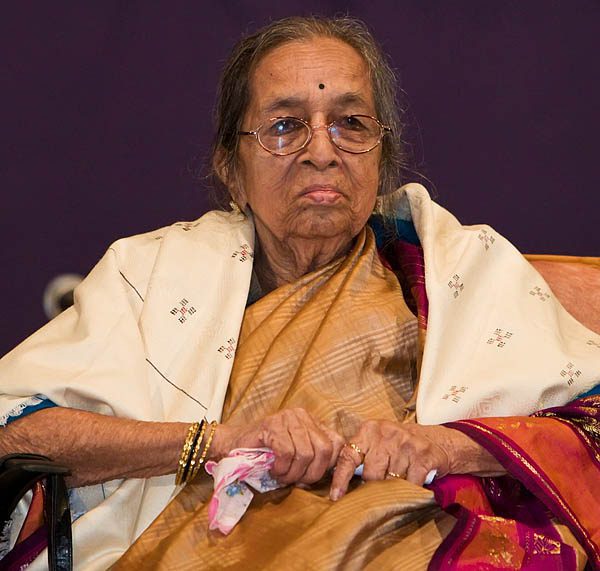
Gangubai Hangal
(© Rajan P. Parrikar)
Basavraj Rajguru‘s treatment reveals a different spin, for instance, his recourse to the N’ R G M G cluster.
Nivruttibuwa‘s interpretation is severely enchanting.
The Atrauli-Jaipur conception of Devgiri departs from convention but the Shuddha Kalyan influence is unmistakable. The placement of the sam on rishab in Kukubh-like fashion may raise some eyebrows.
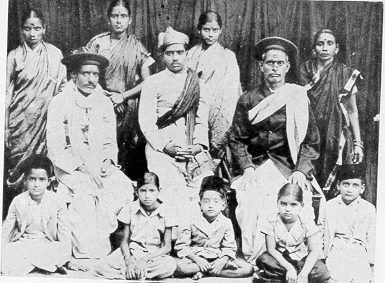
Krishnarao Shankar Pandit (2nd from right)
and wife (extreme right)
Kishori Amonkar unpublished.
Jha-sahab has composed several exceedingly charming compositions in Devgiri. This rachana depicts a coy Sita fending questions about her brother-in-law Laxmana from curious forest dwellers.
The Maihar statement from its most brilliant mind, Ravi Shankar.
Raga Bangal Bilawal
This old Bilawal prakar has dropped off the Hindustani radar. No uniformity of opinion prevails concerning its swaroopa.
Jha-sahab outlines the astha’i of a traditional cheez: devana deva Mahadeva.
Raga Yamani Bilawal
This raga builds upon the natural affinity between the Bilawal and Kalyan angas. The teevra madhyam mediates the Bilawal-Kalyan interface. The key tonal sentences are outlined below. The kans (graces) in conjunction with appropriate intonational behaviour (uccharana) are crucial to ragas of this kind.
S N’ D’ N’ S R G
This uthav represents a key lakshana.
S, G R G P, P m P, GMRG, G R S N’ S R G
Both the Bilawal and Kalyan ragangas are united here.
G R G P, G M D, P, m P G M (G)R G, [P] M G R S
A sample chalan.
An explicit Kalyanic m D N cluster is observed in some versions. On the whole, the Bilawal heritage dominates the proceedings with strands of Kalyan judiciously spliced in.
It will be evident that both Ramashreya Jha’s and K.G. Ginde’s interpretations hew to the outline given above.
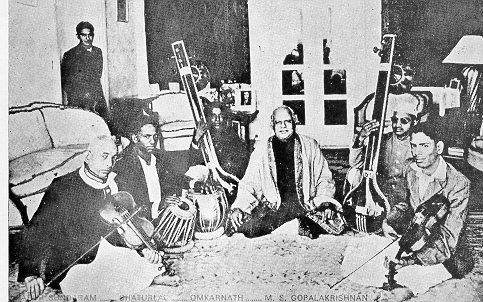
Omkarnath Thakur with Chaturlal (tabla), Parur Sundaram &
M.S. Gopalakrishnan (violins)
Jha-sahab‘s luscious compositions in Yamani Bilawal delight both the heart and mind. He presents a full suite, beginning with the vilambit bandish set to Roopak tala in praise of Saibaba of Shirdi: Sai tihare nama ki aasa lagi mohe.
A couple of druta compositions back-to-back: humari sudha leeje Sa’i.
Dinkar Kaikini serves a traditional khayal in Tilwada tala: aana paro.
K.G. Ginde serves an upaj (lit. improvisation) where the words are not as tightly bound to the rhythmic cycle as in a normal bandish: piya bina kaise ke.
Nivruttibuwa gives somewhat different account. Notice the pleasing touch of the teevra madhyam around 14 secs into the clip.
The Atrauli-Jaipur conception of Yamani Bilawal deviates significantly from convention. Alladiya Khan was a great innovator given to rethinking, refurbishing and repackaging well-worn ragas in surprising, ingenious formulations. In his Yamani Bilawal, the Yaman component is subtle, expressed primarily through N’ R N’ G cluster.
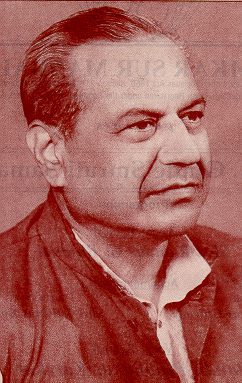
K.G. Ginde
Mallikarjun Mansur expounds.
For the Maihar view, we turn to the brilliant Nikhil Banerjee.
Raga Shuddha Bilawal
“Shuddha Bilawal” means different things to different people.
Abdul Karim Khan‘s rendition draws on standard Bilawal in this magnificent old recording. A strong presence of Yaman and Bihag elements prevails. This formulation may be viewed as a subset of Yamani Bilawal: pyara najara nahin aaye.
Bhimsen Joshi reprises the composition but under the “Yamani Bilawal” brand. The Yaman component is discernible, absence of teevra madhyam notwithstanding. It is a splendid performance and I couldn’t disagree more with the opinion issued by some dilettante awhile back on rec.music.indian.classical (RMIC) that Bhimsen’s hasn’t gotten it right. It is a kinetic act, the raga emerges refulgent, and this is not an opinion.
Mushtaq Hussain Khan of Rampur-Sahaswan was a powerful presence. His version co-opts the bandish traditionally identified with Yamani Bilawal: aana paro.
Kishori Amonkar has her own take on Shuddha Bilawal.
Raga Kukubh Bilawal
The nub of Kukubh Bilawal lies in the presence of the Jaijaivanti and Jhinjhoti chhayas in its poorvanga. Kukubh’s signpost is its sui generis rishab tugged with the gandhar. Consider the following tonal sequence:
S, N’ S (G)R, G R G P M G, M G R G S (G)R
The initial portion is redolent of Jaijaivanti, the latter of Jhinjhoti. The rest of the Kukubh trajectory falls back on Bilawal. Keep an ear out for Kukubh’s special uccharana of rishab.
In LAJAWAB (1950), Anil Biswas scored a beautiful duet that flirts with Kukubh but doesn’t quite seal the deal. Lata Mangeshkar and Mukesh: zamane ka dastur hai yeh purana.
Jha-sahab‘s servings include the vilambit composition, singhasana baithe, and the druta bandish, sumirana kar le mana, both outstanding examples of his creative acumen.
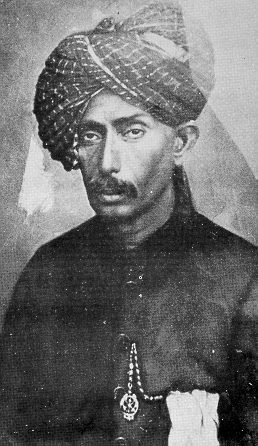
Abdul Karim Khan
Kukubh Bilawal is a strong presence in the Atrauli-Jaipur imagination as witness the next few cuts.
Mallikarjun Mansur: he devata.
Laxmibai Jadhav, disciple of Alladiya Khansahib’s brother Haider Khan.
Next on the Kukubh roster, Vasantrao Deshpande.
Conformance is not a virtue one can associate with the Hindustani raga tradition. The musicians of Agra gharana are the outliers in Kukubh space as witness the following two renditions.
Vilayat Hussain Khan “Pranpiya”.
Raga Shukla Bilawal
Strands of Khamaj are woven into the Bilawal fabric in this ancient raga. Its key identifier is the poorvanga prayoga S G G M, G P M with the trailing deergha madhyam. The Khamaj antecedents and other special sancharis in Shukla Bilawal are heard in the chalan cobbled together by Jha-sahab.
Lata‘s chanting of this verse from the Bhagawad Geeta, composed by Hridaynath, carries a hint of Shukla Bilawal.
A traditional sadra by Jha-sahab: darasa bina mana vikala.
Nivruttibuwa‘s opening bars cut straight to the chase.
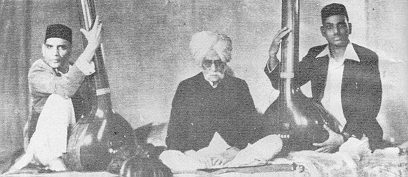
Alladiya Khan with son Burji (left)
and grandson Azizuddin (right)
As an essential item in their toolkit, the Atrauli-Jaipur musicians take Shukla Bilawal very seriously.
The Agra view by Khadim Hussain Khan “Sajanpiya”.
Raga Sarparda Bilawal
This traditional derivate draws its genetic material from Gaud, Khamaj and Bihag, fitting it within an overall Bilawal framework. The disparate constituents are held together with special sancharis. The Gaud strand is at once evident through the S, RGM gesture in the poorvanga. A sample chalan is formulated below:
S, RGM, M D D P, DPMG, R G M
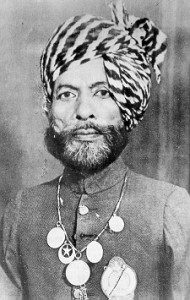
Mushtaq Hussain Khan
Notice the strong madhyam and the deergha dhaivat. There’s also a piquant M n D P cluster, part of its Khamaj heritage. The Sarparda selections ought to clarify its swaroopa as well as the variations observed in practice.
Jha-sahab dwells on his own creations.
Another occasion has Jha-sahab expanding on a traditional composition.
K.G. Ginde chips in with the well-known Sarparda composition: E to manva na rahe.
The view from the B.R. Deodhar gallery.
Umrao Khan (Son of Sarangi maestro Bundu Khan) paints a different canvass. The powerful madhyam creates a ‘virtual Sa,’ releasing chhayas of Yaman (the Bilawalic G P D N is transformed to N’ R G m through the murchhana).
Mushtaq Hussain Khan sketches the Rampur-Sahawan picture.
The Gwalior account by Narayanrao Vyas.
The final Sarparda item is the Atrauli-Jaipur version by Mallikarjun Mansur.
At this juncture, we pause and take in this spirited lecture on the Bilawal group of ragas by Jha-sahab.
Raga Hameer Bilawal
As the name suggests, this raga is a happy union of Hameer and Bilawal. Jha-sahab received this raga and the composition from his guru Bholanath Bhatt, who in turn picked them up from the sarangi master Bundu Khan. The movements switch felicitously between the two parent ragas. The text speaks of the gopis and their anguish, expressed to Uddhava, over Lord Krishna’s absence.
Raga Nat Bilawal
The Nat contribution of this hybrid is manifested in the poorvanga through S R, R G, G M, G M R S.
Jha-sahab‘s composition lays bare the raga lakshanas: peeharva na aaye mora.
The Maihar sarodiya, Bahadur Khan.
The placement of the sam on rishab in the preceding renditions at once points to the Nat raganga.
Our second selection of Nat Bilawal is an unpublished recording of Kesarbai Kerkar in Shantiniketan in 1950.
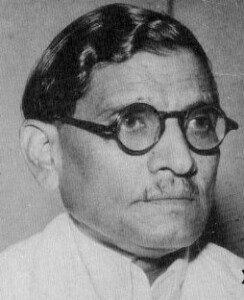
Vilayat Hussain Khan
Raga Lacchasakh
There is no consensus on the swaroopa of this uncommon Bilawal prakar. Lacchasakh is considered part of the traditional ‘Sakh’ quartet, the others being Devsakh, Ramsakh and Bhavsakh. Three selections of are offered and the reader is invited to bring his own measure.
Jha-sahab outlines the chalan before dealing his bandish.
Omkarnath Thakur sells the Gwalior line: prathama tala sur sadhe.
The Atrauli-Jaipur interpretation draws on Khamaj gestures. Anandrao Limaye (Limayebuwa) ‘explains’.
Raga Sukhiya Bilawal
This Atrauli-Jaipur specialty is infused with prayogas from Savani (GMPMPG) and Bihag.
Kesarbai Kerkar: devi Durge. (Note: HMV has mislabeled this recording as Kukubh Bilawal.)
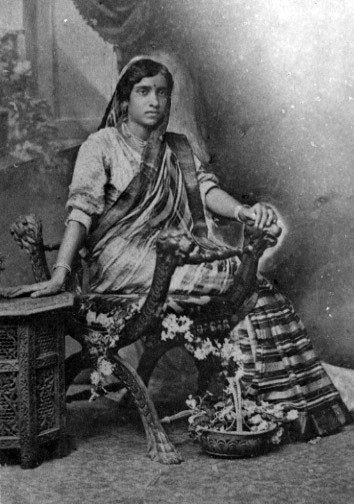
Kesarbai Kerkar
Anandrao Limaye (Limayebuwa) proffers a different composition.
Raga Jaij Bilawal (Jayant Bilawal)
This Bilawal prakar is fitted with strands of Jaijaivanti in its poorvanga.
Catch the subtle komal gandhar in Mallikarjun Mansur‘s performance.
B.R. Deodhar‘s view.
The third and final version features Altaf Hussain Khan of Khurja.
Raga Gaud Bilawal
The Gaud strand S, RGM riding on Bilawal is the main theme here.
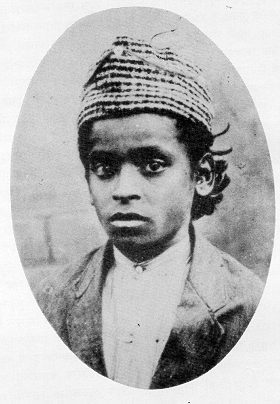
Mallikarjun Mansur, age 9
Raga Champak Bilawal
An idle afternoon and a nimble mind are all it takes to add to the Bilawal kitty. This are not considered ‘big’ ragas. Jha-sahab often uses the chutney analogue – it enlivens the meal but should not be mistaken for the main course.
Khadim Hussain Khan. The text of the composition, ananda mukha chanda, in found in bandishes of other old ragas. See, for instance, Jha-sahab singing Raga Chandni Bihag in Short Takes – Bihag, or the Asha Bhonsle-Ali Akbar recording of Raga Shankara Karan on the Legacy album.
Raga Narayani Bilawal
Prof. B.R. Deodhar whips up a cocktail with a blend of Narayani and Bilawal.
This brings us to the end of the Bilawal Trail. A refreshing, hot breakfast is just what a man needs after a good musical workout. I must now answer to the call of idlis and dosai. Ta-ta!

